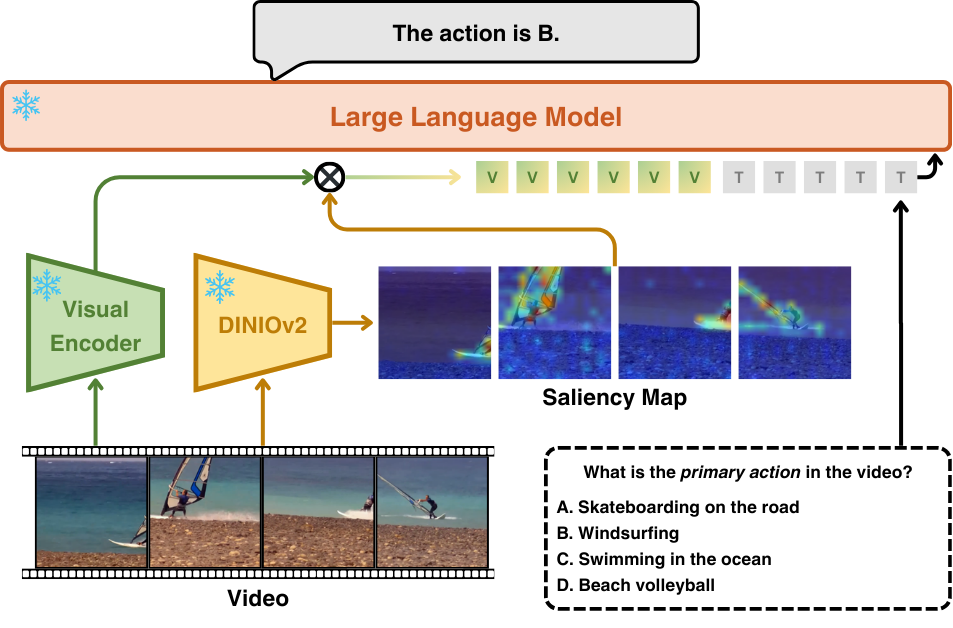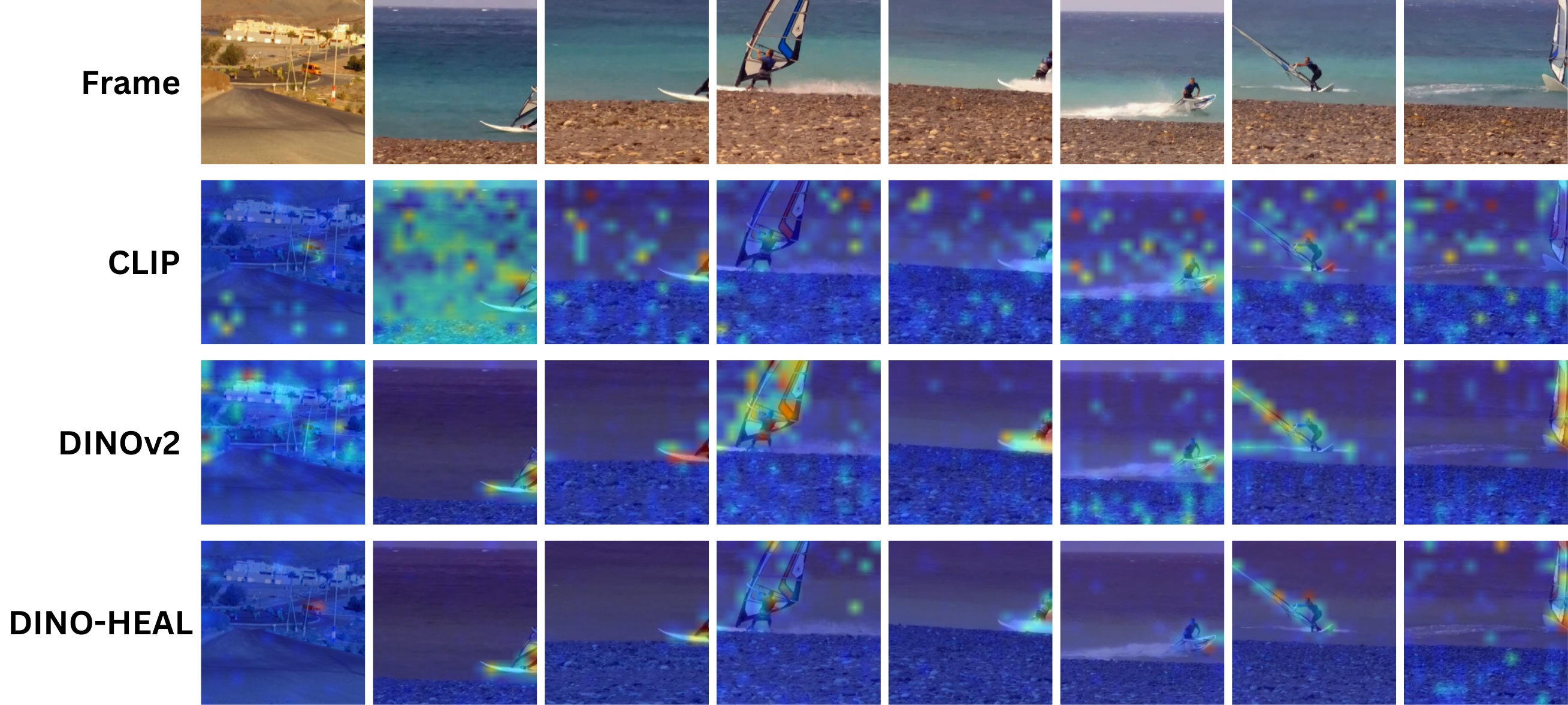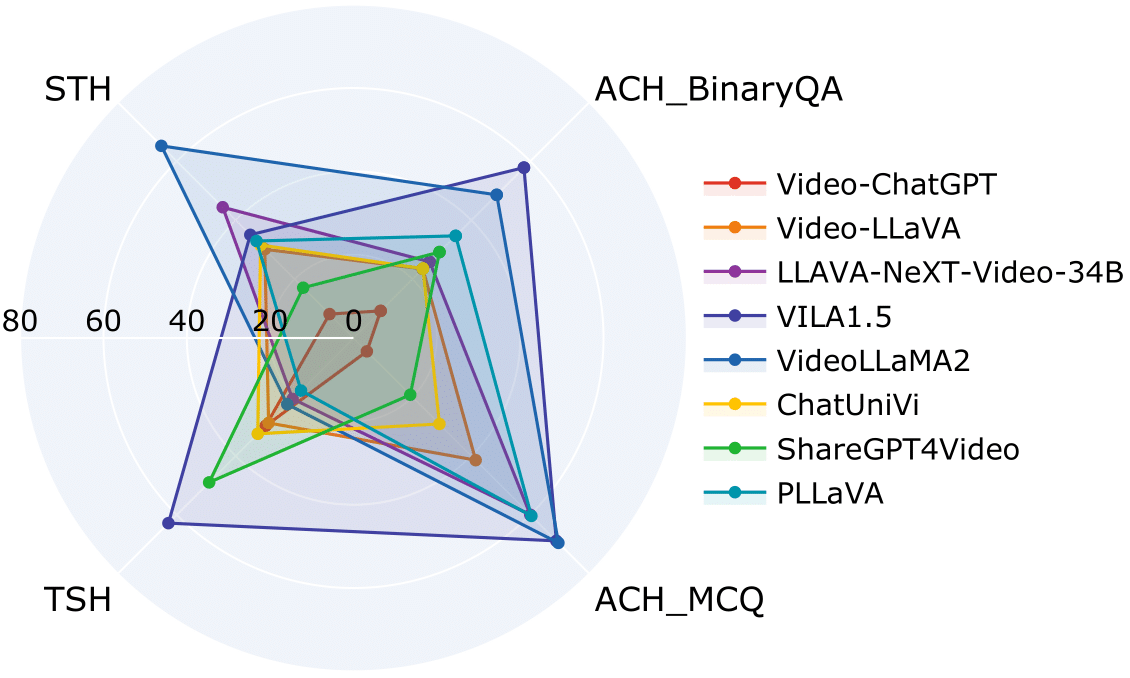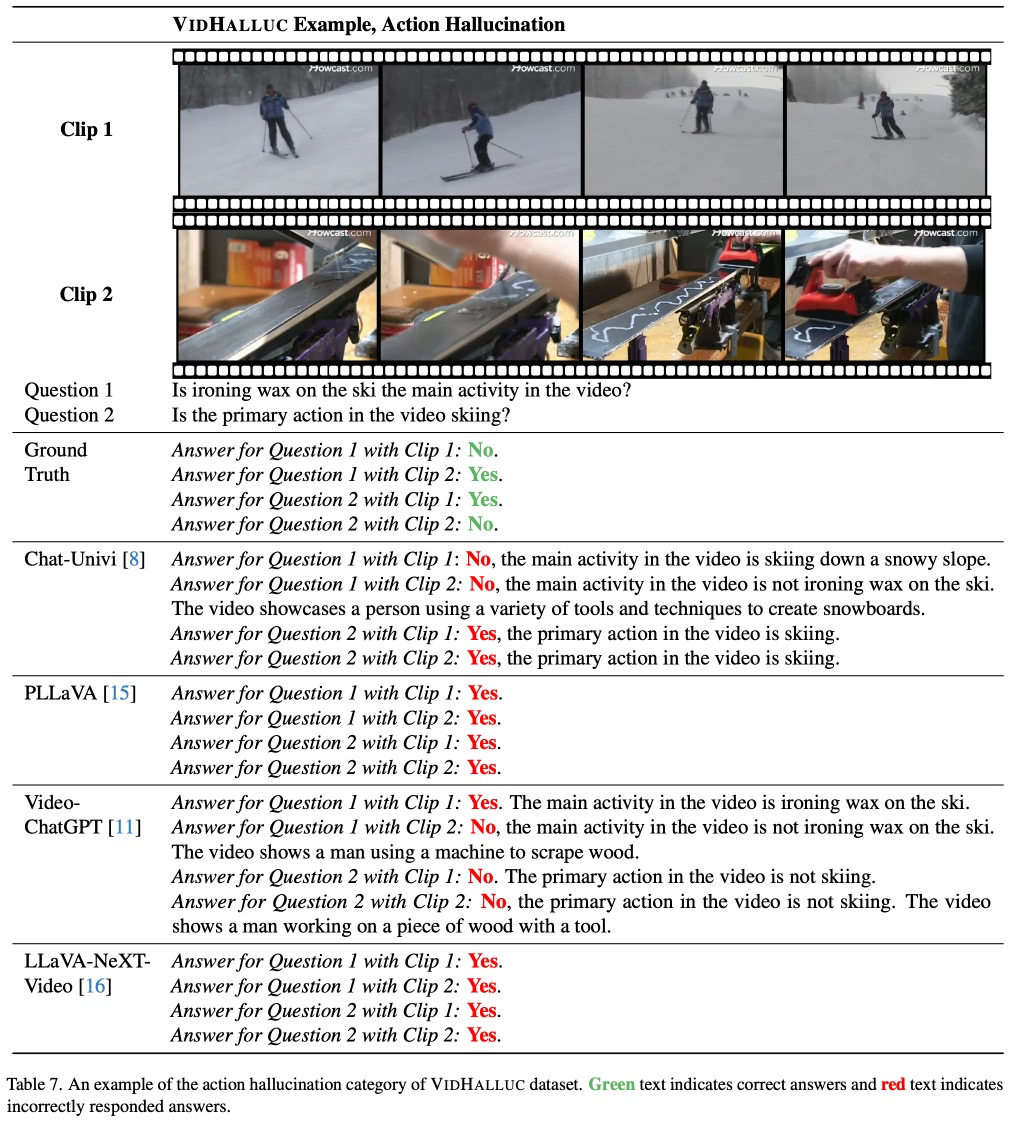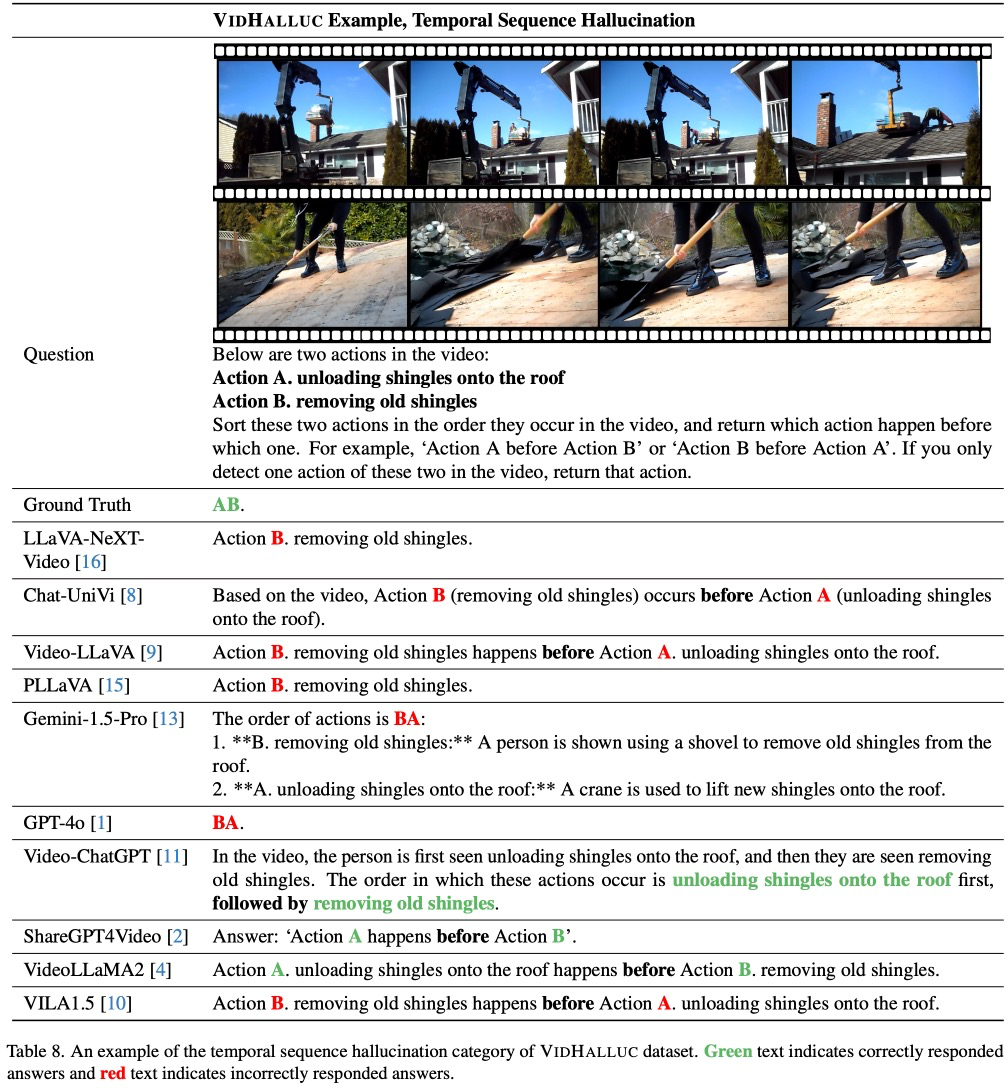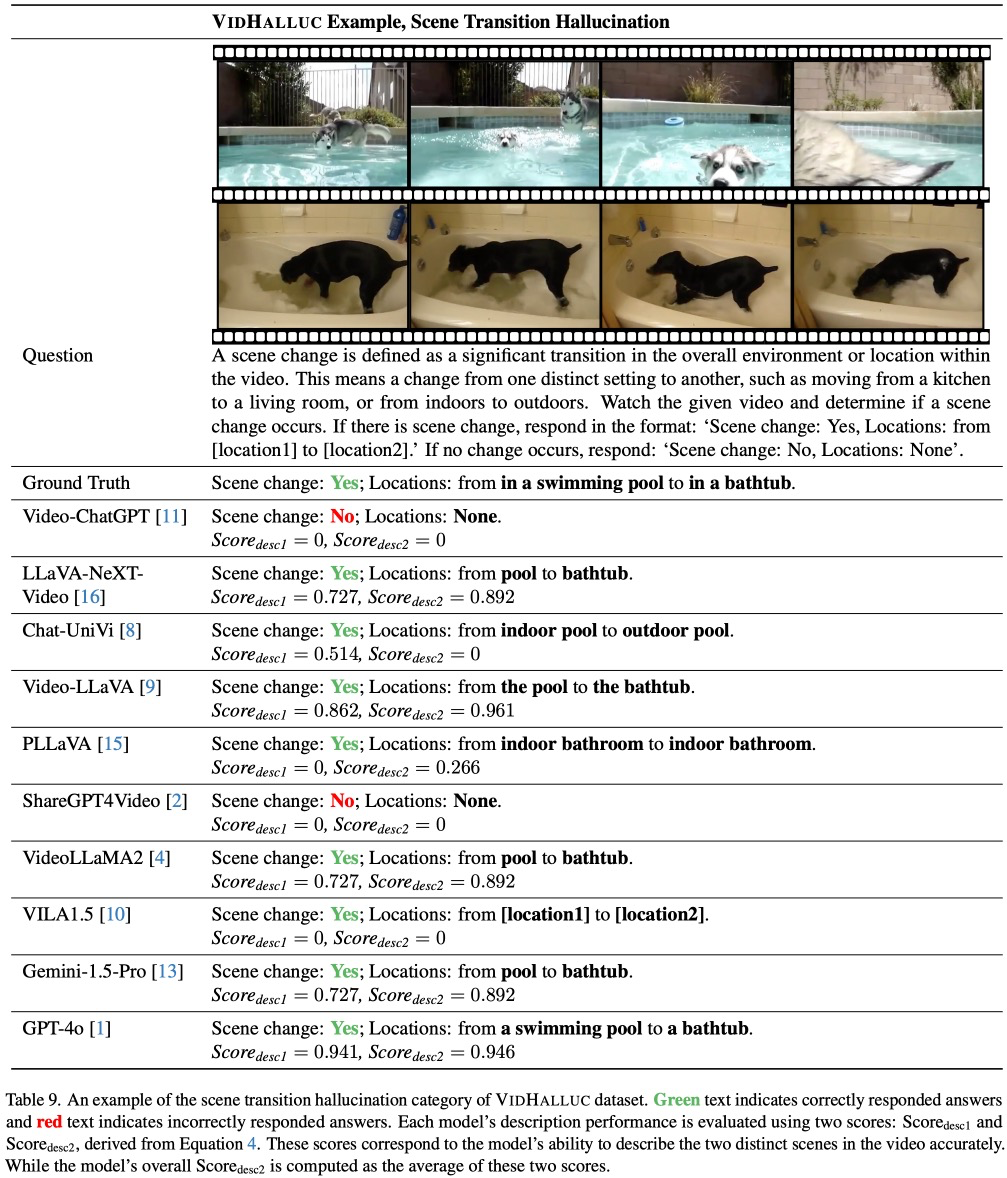Multimodal large language models (MLLMs) have recently shown significant advancements in video understanding, excelling in content reasoning and instruction-following tasks.
However, the problem of hallucination, where models generate inaccurate or misleading content, remains underexplored in the video domain.
Building on the observation that the visual encoder of MLLMs often struggles to differentiate between video pairs that are visually distinct but semantically similar, we introduce VidHalluc, the largest benchmark designed to examine hallucinations in MLLMs for video understanding tasks. VidHalluc assesses hallucinations across three critical dimensions: (1) action, (2) temporal sequence, and (3) scene transition.
VidHalluc consists of 5,002 videos, paired based on semantic similarity and visual differences, focusing on cases where hallucinations are most likely to occur.
Through comprehensive testing, our experiments show that most MLLMs are vulnerable to hallucinations across these dimensions.
Furthermore, we propose DINO-HEAL, a training-free method that reduces hallucinations by incorporating spatial saliency information from DINOv2 to reweight visual features during inference.
Our results demonstrate that DINO-HEAL consistently improves performance on VidHalluc, achieving an average improvement of 3.02% in mitigating hallucinations among all tasks.


